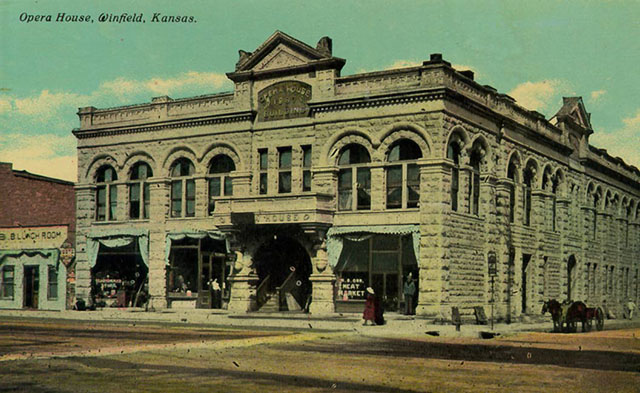








Old Winfield Landmarks - Panel Four Winfiled Public Library Exhibit
Opera House
Once the pride of Winfield, the Opera House stood where David’s Electronics and Appliance store is now located at East Eleventh and Main.
Martha Jean Robinson recalled that "Winfield enjoyed the fine small touring opera companies that came through, and later stage shows and vaudeville acts were booked." She especially recalled the "beautiful maroon velvet stage curtain" and the organ.
For many years, starting at its establishment in 1899, the Winfield College of Music occupied the second floor of the Opera House and its studios were used by students and teachers. Hundreds of Winfield students had their first lessons there. In 1926, the College of Music was absorbed by the Southwestern College department of fine arts.
Dr. E. Marie Burdette, who will become 99 years of age on July 3, became a piano instructor at the college two weeks before her graduation from Winfield High School in 1920 and, while teaching there also was an advanced student in piano. She easily recalled that at her graduation from the College of Music, in ceremonies held in the Opera House, she played for her final selection Franz Liszt’s Hungarian Fantasy. And she also recalled the time the St. Louis Symphony played at the Opera House under the baton of Dr. Rudoplph Ganz, head of the Chicago Music College which Miss Burdette attended after her College of Music courses.
History of the Opera House
(from the 1976 Bicentennial history "Winfield and The Walnut Valley")
"The Opening of the New Opera House Last Night by the Gypsy Baron Company Was a Grand Success! The Assemblage of Beautiful Women in the Grand Building Made it a Wonderfully Dazzling Sight, the Like of Which has Never Been Witnessed in our City Before! (5-deck headline in the Winfield Courier February 1, 1888)
--------------------
Costing $60,000, the ornate Opera House was opened at Main and Eleventh Jan. 31, 1888 and was considered one of the finest in the state. It was of two stiories and built of native stone. It had an enormous stage - 60 feet wide - a splendid crystal chandelier with 64 gas burners, beautiful proscenium boxes and plush seating. A parquet circle seated 250 persons immediately back of the orchestra and a dress circle back of that seated another 360, with the balcony adding 80 more.
At either side of the stage Parisian boxes contained 11 plush chairs each, behind and above those were the proscenium boxes with a tete-a-tete and four easy parlor chairs richly upholstered. Entrance to these was through a draped doorway and up a short stair. The fronts were finished in tints of gold with three-jet brackets of burnished brass on the pilasters on either side.
Stage lighting included 36 gas footlights and three sets of border lights above the stage that connected to 96 jets.
There were eight heated dressing rooms, plus all sorts of rooms and space, for carpenters, set storage, musicians.
At the prompter’s station were located the speaking tubes and "bell wires running everywhere." At the hand of the prompter were nine gas cutoffs regulating every light in the entire building.
Persons attending the opening program presented by the Gypsy Baron Company were dazzled by the splendor of the new building and by the outstanding acoustics.
When movies became popular, the opera house was converted to the Regent movie theater and much of the ornamentation disappeared during a mjor remodeling in 1925. The bulding changed hands three times and a second major remodeling took place. A Wurlitzer organ was installed at that time. In 1928, a magnificent, three-manual Robert Morton theater organ was installed at a cost of $25,000. But sound movies brought a sudden and unexpected revolution in the business and the fine organ was used for only about a year and a half. Several years later, it was sold to an Oklahoma City church.
Ceiling fans provided the first air conditioning and later cooled air was provided by huge fans blowing over a tank of ice in the basement. Air conditioning was installed in the 1950 remodeling.
In later years, the auditorium continued to be used occasionally as a concert hall for Kiwanis Club minstrels, for Miss Winfield pageants and civic music series.
The building was razed in 1961 and in the spring of 1967 Western Auto opened in a new building on the site.
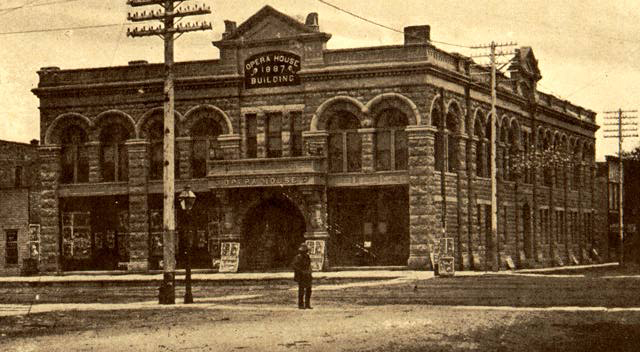
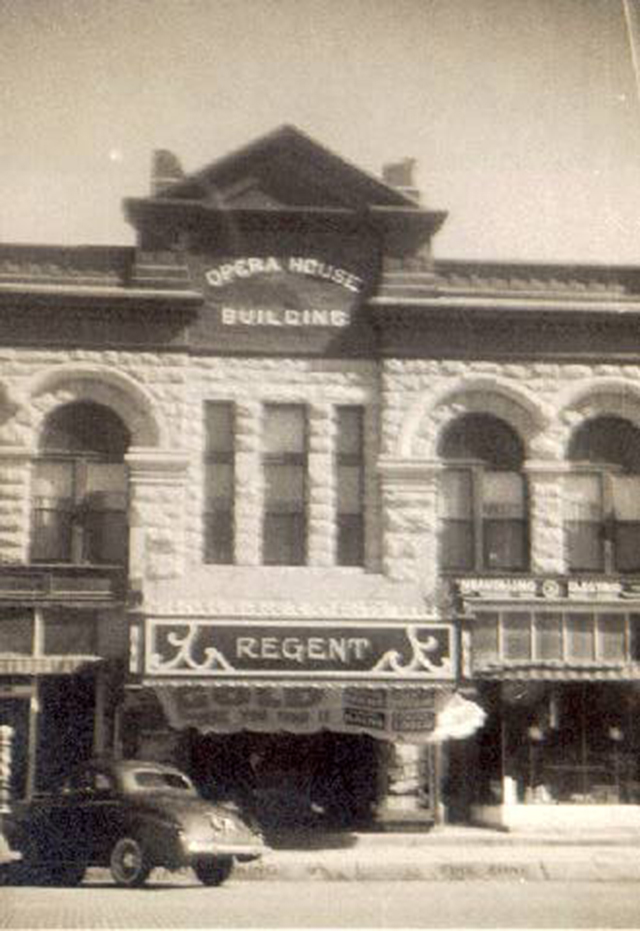
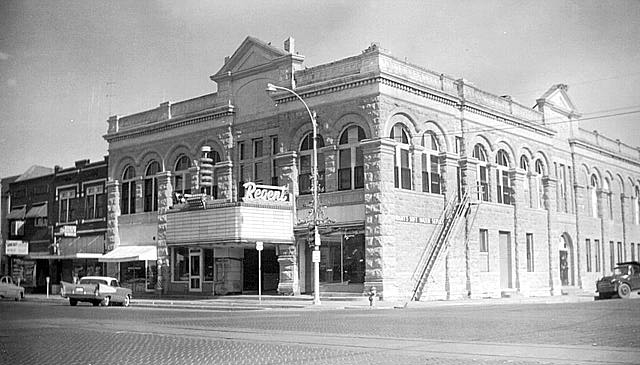
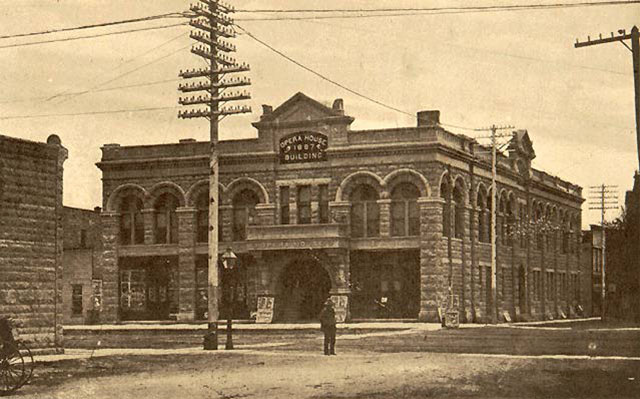
Howard Buffum April, 2000

